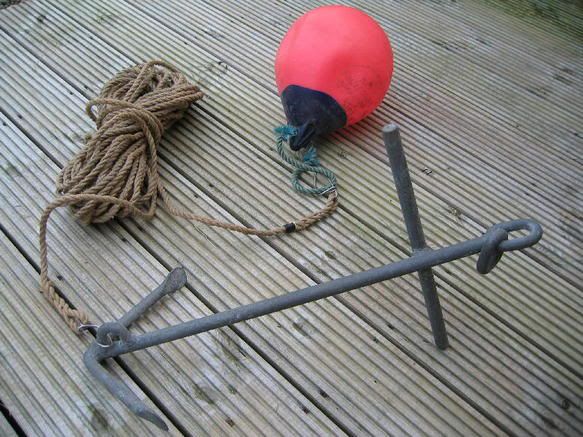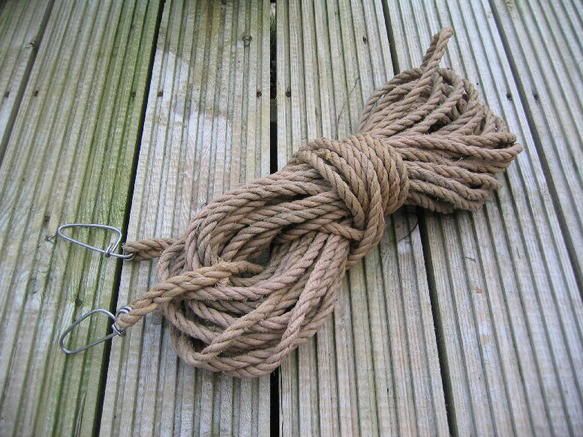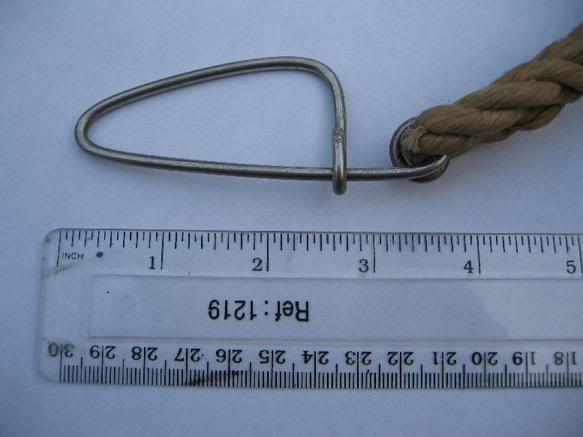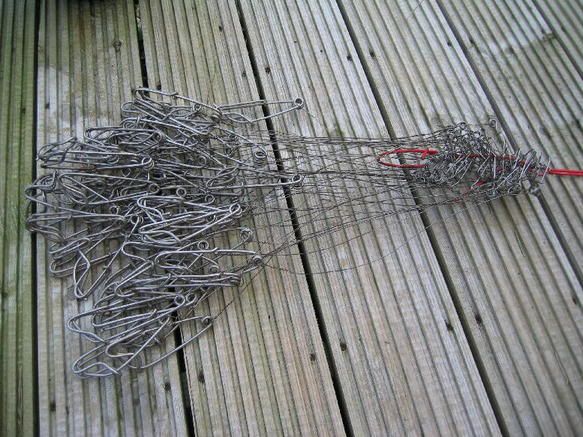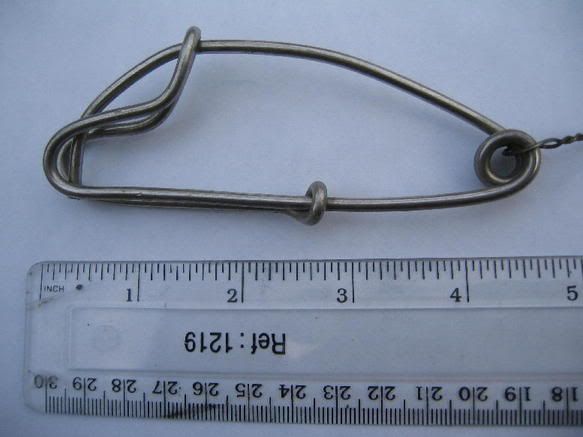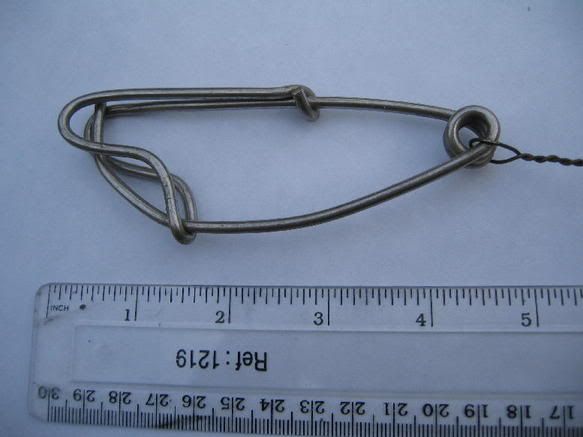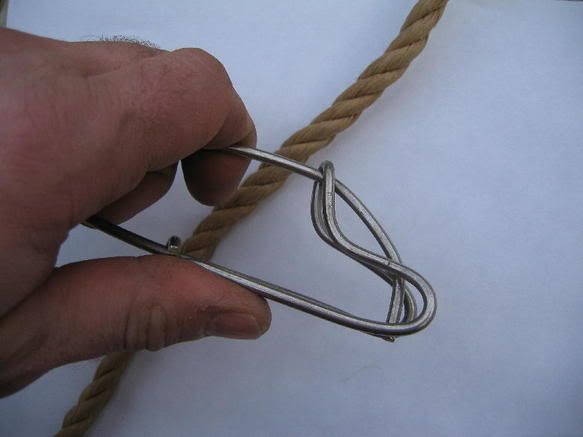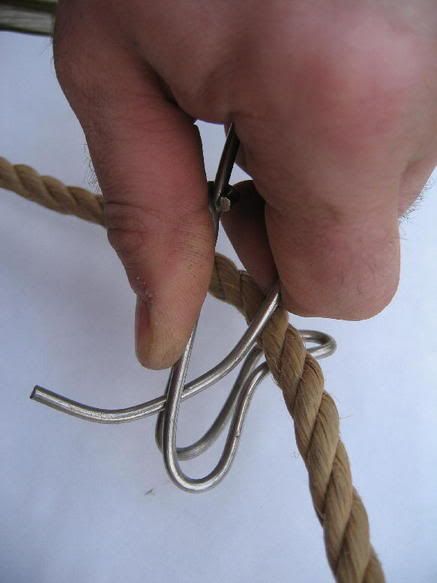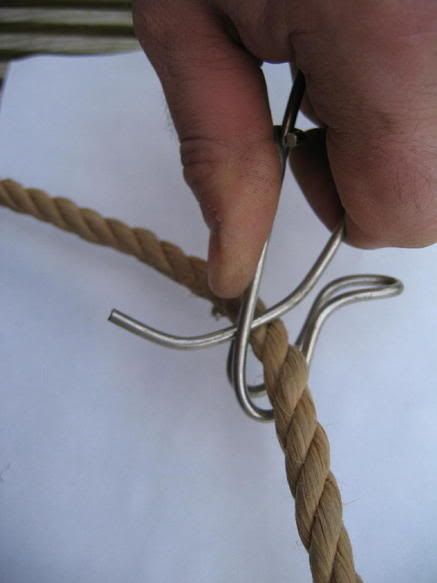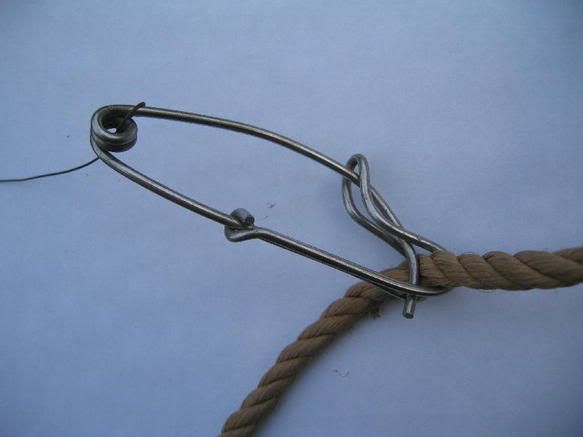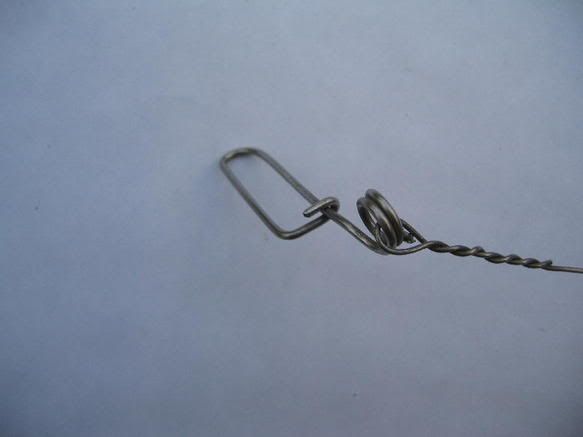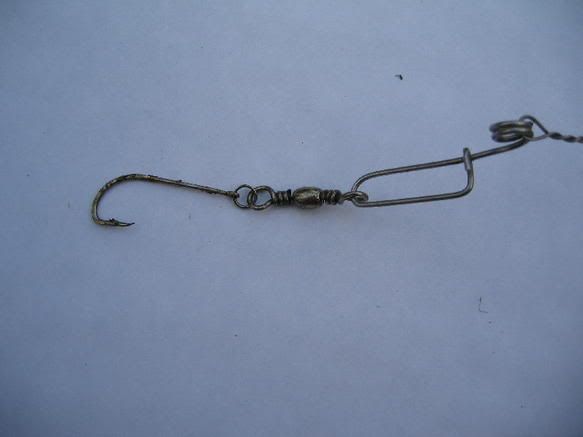First the anchor ,this is a home made anchor.
A rope is attached to the "tripping eye" and at the other end of the rope is attached the buoy.
Another rope (the main line) is then attached to the anchor "ring".
The ropes are all the same length (approx. 70 feet) and have clip's at each end for quickly attaching and detaching.
You "shoot" the line and when the anchor is on the bottom the boat will lie to it and you can begin to attach the "snoods" to the main line.
These are the snoods.
They are simply clipped in place.
Attached to the snood is a "hook length" and to that is attached another clip.
To this is attached a swivel and a hook.
As the main line is fed out the snoods are clipped on and spaced as required (best to clip far enough apart so the hooks can't tangle with each other).
As you come to the end of a rope simply snap on another untill you have used all the snoods.
Then attach to the ring of another anchor and attach another rope with a buoy to the tripping eye.
All the clips ,snood's and hook length's are all home made from stainless wire.
They are made on a jig so they are all the same size.
The clips are made larger than necessary so as to be easy to use when working with gloves on ,(very important as the rope's get covered in jelly fish stings)
Advantages over a normal mono filament long line setup are:
1.The snoods are all pre baited ,i used to bait them on the way out to the fishing grounds and this is much quicker than baiting each hook as it's fed out like on conventional mono long lines.
2.When you haul the lines you simply unclip the snoods ,complete with fish and drop them in a fish box rather than stopping to unhook them as you haul.
When you are heading home the fish can be unhooked and the swivel and hook can be dropped into a jar with some fish oil which will protect them until it's next needed.
Conventional long lines that leave the hook's attached need to have the hooks replaced as they corrode quickly in salt water.
The hooks in my pictures are 20 years old and as good as new.
3.You can coil the ropes as you haul them and when you reach a clip ,simply unclip and drop it in a basket.
This means you are actually packing the lines away as you haul them ,ready for the next time.
4.Being a modular system you can adapt it to suit ,increasing or decreasing th length of main line and the number of hooks to suit the ground and your requirements ,and any damaged parts are easily replaced.
5.Using ropes and large clips rather than mono and small snap swivels is much easier when wearing gloves and the whole system is much stronger and lasts much longer.
rb

